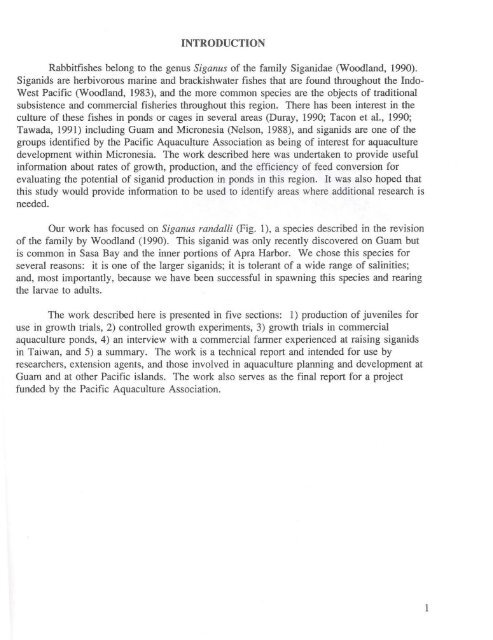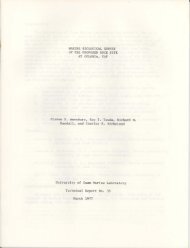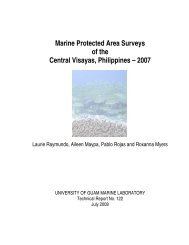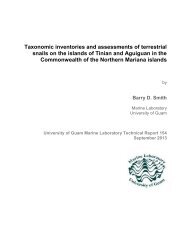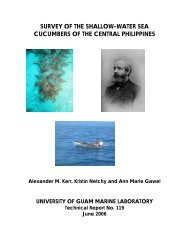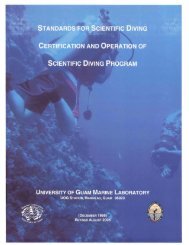Growth of the rabbitfish Siganus randalli Woodland - University of ...
Growth of the rabbitfish Siganus randalli Woodland - University of ...
Growth of the rabbitfish Siganus randalli Woodland - University of ...
- No tags were found...
Create successful ePaper yourself
Turn your PDF publications into a flip-book with our unique Google optimized e-Paper software.
INTRODUCTIONRabbitfishes belong to <strong>the</strong> genus <strong>Siganus</strong> <strong>of</strong> <strong>the</strong> family Siganidae (<strong>Woodland</strong>, 1990).Siganids are herbivorous marine and brackishwater fishes that are found throughout <strong>the</strong> IndoWest Pacific (<strong>Woodland</strong>, 1983), and <strong>the</strong> more common species are <strong>the</strong> objects <strong>of</strong> traditionalsubsistence and commercial fisheries throughout this region. There has been interest in <strong>the</strong>culture <strong>of</strong> <strong>the</strong>se fishes in ponds or cages in several areas (Duray, 1990; Tacon et aI., 1990;Tawada, 1991) including Guam and Micronesia (Nelson, 1988), and siganids are one <strong>of</strong> <strong>the</strong>groups identified by <strong>the</strong> Pacific Aquaculture Association as being <strong>of</strong> interest for aquaculturedevelopment within Micronesia. The work described here was undertaken to provide usefulinformation about rates <strong>of</strong> growth, production, and <strong>the</strong> efficiency <strong>of</strong> feed conversion forevaluating <strong>the</strong> potential <strong>of</strong> siganid production in ponds in this region. It was also hoped thatthis study would provide information to be used to identify areas where additional research isneeded.Our work has focused on <strong>Siganus</strong> <strong>randalli</strong> (Fig. I), a species described in <strong>the</strong> revision<strong>of</strong> <strong>the</strong> family by <strong>Woodland</strong> (1990). This siganid was only recently discovered on Guam butis common in Sasa Bay and <strong>the</strong> inner portions <strong>of</strong> Apra Harbor. We chose this species forseveral reasons: it is one <strong>of</strong> <strong>the</strong> larger siganids; it is tolerant <strong>of</strong> a wide range <strong>of</strong> salinities;and, most importantly, because we have been successful in spawning this species and rearing<strong>the</strong> larvae to adults.The work described here is presented in five sections: I) production <strong>of</strong> juveniles foruse in growth trials, 2) controlled growth experiments, 3) growth trials in commercialaquaculture ponds, 4) an interview with a commercial farmer experienced at raising siganidsin Taiwan, and 5) a summary. The work is a technical report and intended for use byresearchers, extension agents, and those involved in aquaculture planning and development atGuam and at o<strong>the</strong>r Pacific islands. The work also serves as <strong>the</strong> final report for a projectfunded by <strong>the</strong> Pacific Aquaculture Association.


